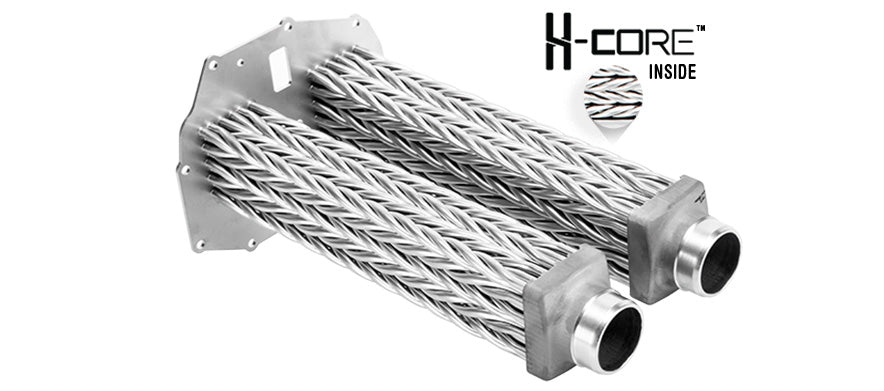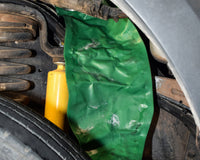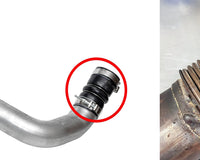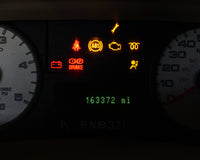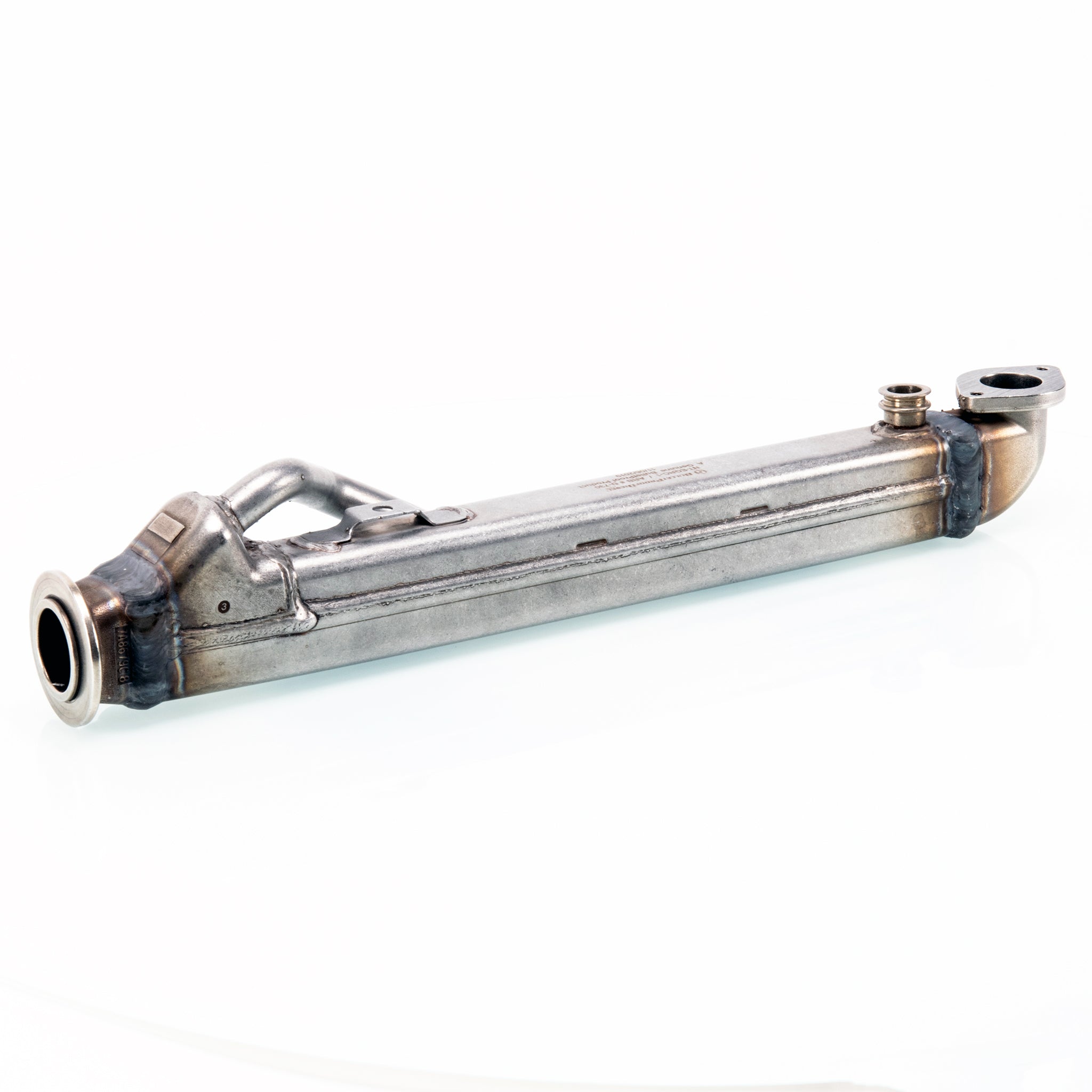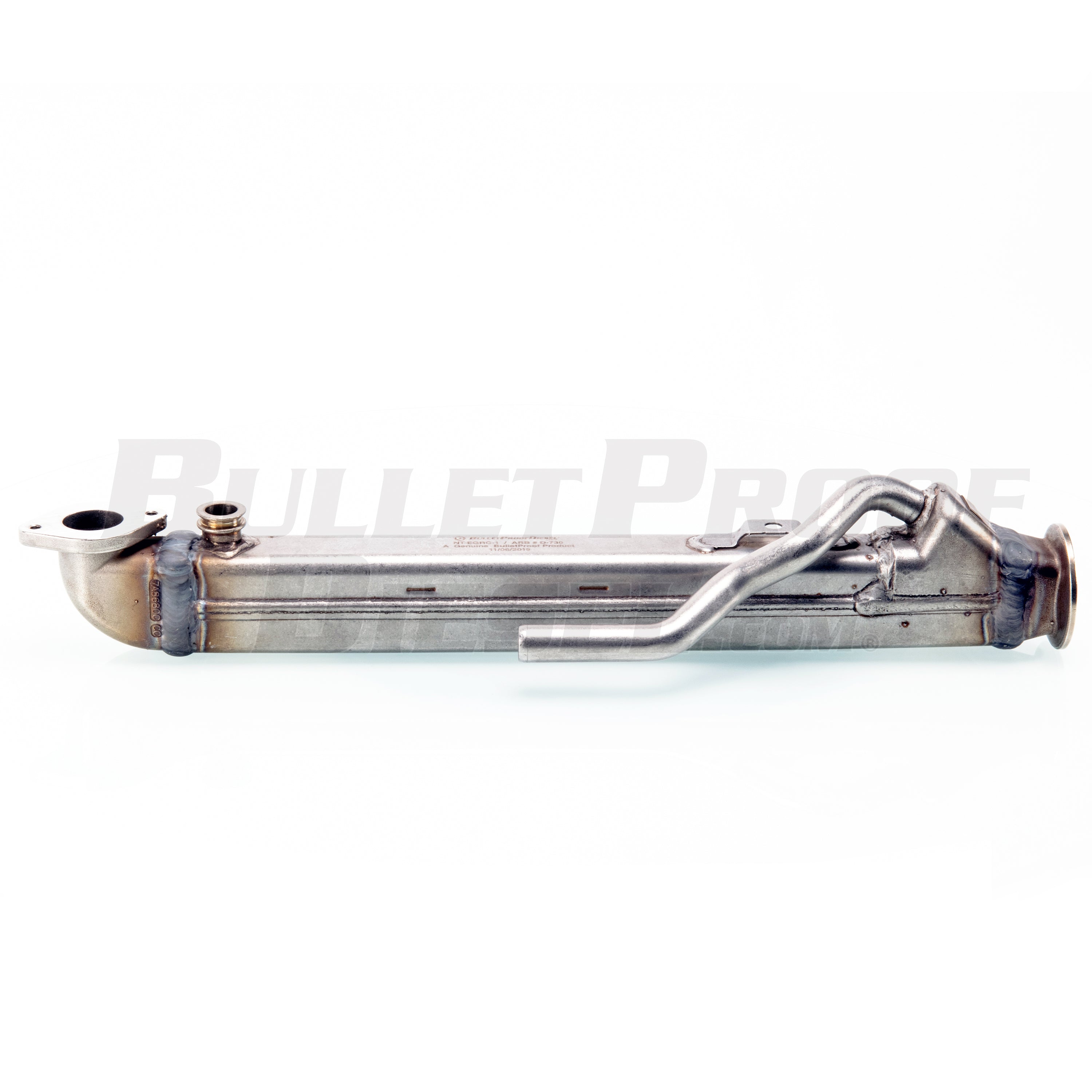The cooler in your truck’s EGR system works with the EGR valve to create a mix of air, fuel, and exhaust gases that reduce emissions.
These EGR coolers are a known weak point on most diesel engines, which leaves a lot of questions for owners. Why do the exhaust gases running through this system need to be cooled? How do you know the cooler in your truck is going bad? Why does it need to be cleaned? Why and when should you consider upgrading to a Bulletproof EGR cooler? We have the answers to these questions and more, so you can take care of your truck’s EGR’s exhaust cooling system and protect your engine.
What Does an EGR Cooler Do?
Pollutants don’t just come from unburnt gases coming out of your diesel engine. They also form when extreme heat inside your diesel’s combustion chamber breaks chemical bonds, forming new molecules. Nitrous Oxides (NOx) and ozone (O3) are formed when this heat combines nitrogen and oxygen atoms from the air. NOx can form smog, and when it mixes with water, it can form acid rain. The ozone layer helps protect us from UV light, but at ground level, this gas may cause breathing problems, especially for those with asthma.
Exhaust Gas Recirculation (EGR) lowers combustion temperatures by diluting the air/fuel mixture with a small amount of inert exhaust gas. This has little effect on performance while reducing the chance of chemical reactions that form pollutants. However, diluting the mixture will be even more effective if the exhaust gas is cool, not hot. That’s where the cooler comes in.
The cooler is piped in between the turbo and the EGR valve. The body has a hollow tube or series of tubes for the hot exhaust gas to pass through. Surrounding these tubes, are several coolant passages. Heat passes through the walls separating the exhaust and coolant, delivering cooler, inert exhaust gases ready to able to lower peak combustion temperatures. The flow of exhaust gases through the EGR cooler is controlled by the vehicle’s computer via the EGR valve.
All of the heat from the exhaust system is simply transferred to the vehicle’s cooling system. This additional heat is simply dissipated through the radiator. However, since the EGR cooler connects the exhaust and cooling systems of your engine, failures inside the cooler may lead to coolant loss, overheating, and engine damage, among other failures.
How Do I Know My Cooler is Going Bad?
Complete failure of your EGR’s cooling system could possibly cause major damage to your engine. However, if you know what to look for, you may be able to spot your cooler’s failure before it becomes catastrophic.
Usually, the first sign of failure is white exhaust smoke. This “smoke” is actually steam from boiling water or coolant. There are several possible sources for this steam, including head gasket failure, a cracked EGR cooler or condensation inside the exhaust system. When the coolant passages inside your cooler leak, the coolant mixes with the exhaust and enters the intake. This liquid is heated either directly by the exhaust, or inside the engine before being pushed out through your truck’s tailpipe.
As with any coolant leak, you may start noticing a lack of coolant in your overflow bottle. If you have to keep refilling your coolant system, and you don’t notice any drips on the ground, that coolant may be exiting through the exhaust via a leaking cooler.
Normally, your truck’s EGR valve will be black from carbon buildup. If the coolant is entering the EGR system, it can mix with this carbon. Small amounts of coolant can mix with this carbon, creating a sticky, tar-like buildup. In some cases, there may be enough coolant passing through to strip away the carbon. This leaves the valve looking like it has been steam cleaned. The valve may even look wet if there is a major leak, or if the engine wasn’t running long enough to turn the liquid into steam before reaching the engine.
Severe failures can lead to more drastic consequences. Exhaust gas pressure upstream of the turbo can be higher than coolant pressure, which means it’s possible for these gases to enter the coolant system through a cracked EGR cooler. This can push coolant out of the overflow bottle, which may lead to overheating. Liquids don’t compress, so adding coolant to the intake may increase the effective compression ratio. If too much coolant enters the engine, the pressure can be so high that it may cause hydro-locking. The force can bend connecting rods, stretch head bolts, or blow the head gaskets, causing severe engine damage.
Why is My Cooler Failing?
Often, failure is caused by a combination of poor design and a tough work environment. Some stock coolers use thin, oval passages. These passages are subject to two main types of stress: heat and pressure. The EGR cooler heats and cools repeatedly during a normal drive cycle. Cooled when the coolant flow removes heat and the EGR valve is closed, and then heated and stressed as hot exhaust gases pass through. Each time it heats up, the metal inside the cooler grows and strains against the restraints of the unyielding metal shell, causing stress and strain. Additionally, the EGR cooler is often exposed to the stress and strain of pressure from the cycling turbo. On variable geometry turbos, for instance, the computer controls how much boost is required for the engine. As the turbo restrains and relaxes the flow of exhaust, this pressure cycling is felt by the tubes and fins within the EGR cooler, pushing and relaxing, pushing and relaxing thousands of times during the life of an EGR cooler.
There may be other problems with your engine that are causing cooler failure. A failing water pump can restrict flow to the cooler, leading to overheating. Likewise, some diesels, like the Powerstroke 6.0L, have a coolant-based oil cooler. If this cooler fails or the coolant passages become clogged (a common occurrence on the 6.0L), it may reduce flow to the EGR cooler, or create a sludgy oil/coolant mix that won’t flow through the cooler.
If your engine has fuel issues, it can increase the amount of soot in the exhaust which will then coat and often plug your EGR cooler exhaust channels. Long idling times may increase soot production, as can the use of low certain diesel fuel. When plugged and coated with soot, the EGR cooler is less able to cool the needed exhaust gases, which can set a check engine light.
Sometimes, the failure is caused by a flaw in the part itself. While the coolers often present themselves as very capable heat exchangers in a laboratory setting, the coolers often are not designed with ALL of the requirements in mind – namely heat exchange and reliability. Heat transfer is important, but it should not come at the high cost of expensive engine repairs and lost productivity due to a lack of reliability.
A marginal or compromised EGR cooler can often be one thermal event away from failure. This could be when towing heavy loads up long grades or when some other cooling system issue occurs, such as water pump failure, a random grocery bag blocking airflow through the radiator or even, simply, low coolant levels. When, not if a thermal event like this occurs, the stress and strain on the EGR cooler could greatly increase. This thermal stress may strain the bulkheads on the ends of the cooler, eventually splitting the metal. Furthermore, EGR coolers are often located relatively high in the cooling system, making it a great place to capture air bubbles when a leak occurs Air is a great thermal insulator, causing hot spots and much higher thermal stress occurring within the cooler.
How Can I Clean My EGR Cooler?
Replacing a cooler can get expensive, requiring pricey replacement parts and hours of labor charges. While failure is probably inevitable, you may be able to extend the life of this part by keeping it clean. Clearing out soot and debris can restore an even flow through the cooler, which may reduce internal pressures and improve cooling performance.
There are several methods for cooler cleaning out there, but they all boil down to the same steps:
- Remove the cooler from the vehicle.
- Fill the cooler with a detergent.
- Let the cooler soak in the detergent to dissolve deposits.
- Thoroughly rinse the cooler to remove the loose deposits.
- Let the cooler dry, then reinstall it.
Ask 10 diesel experts what the best cleaning solution is for removing build-up from an exhaust cooler, and you’ll get 10 different answers. Technicians and home mechanics use a range of products, including specialty EGR cleaners, all-purpose cleaners, carburetor cleaners, and engine-safe carbon removers. That’s not to say they’re all created equal. EGR cleaners are designed for this purpose, but some formulas may be slow acting. Flammable cleaners like carburetor cleaner can self-ignite. This can potentially cause engine damage if the cooler isn’t completely clean and free of vapors before being reinstalled. All-purpose cleaners usually aren’t flammable, but the results are mixed. Some techs say they do little to remove deposits, while others swear by these chemicals.
To clean really dirty passages, some repair shops place EGR coolers inside an ultrasonic cleaner. The ultrasonic waves vibrate the carbon loss while circulating detergent through the passages. This can speed up the cleaning process.
How often should you clean your EGR’s cooler? Again, opinions differ a lot. Most factory recommendations have long intervals based on miles. However, technicians often recommend more frequent cleaning on engines that idle a lot, due to soot buildup. When it comes down to it, you should probably clean your cooler when it gets dirty, whether that means flushing it out every 10,000 miles or 80,000 miles. Cleaning intervals determined by frequent inspection may reduce the chance of failure due to carbon build-up.
Is There a Better Way to Deal with EGR Cooler Problems?
Bullet Proof Diesel was founded to find solutions to common diesel engine problems, including EGR coolers. Our patented H-CORE design addresses clogging problems by using large, helical tubes in place of the narrow exhaust passages found on OEM coolers. These passages are less prone to breaking and clogging, maintaining the performance of your emissions system. Their twisted shape also lets them act like a set of springs, absorbing movement from expansion and contraction. This helps to relieve the stress off of the cooler’s bulkheads when your diesel is working its hardest.
While we’re known for an Ford 6.0 EGR Cooler Powerstroke that owners use to solve frequent failures, we make coolers for most diesels, including Duramax, Komatsu, Volvo, Ford, Dodge, Detroit, RAM, International, Cummins, EcoDiesel and more. Unlike many diesel parts companies, we’re not exclusively interested in performance. Even if you have a completely stock engine, it may benefit from our components. We design our coolers to fit in stock locations, requiring little in the way of modification. This makes them a great upgrade, whether you’re tuning your diesel engine, or you’re trying to protect a fleet of work vehicles.
We make it easy to upgrade your EGR system. You can order parts directly from us if you want to install a cooler yourself. If you want the work handled by a professional, we have a network of preferred installers. These shops have experience with our components, so you can be sure your BulletProof EGR cooler will be installed correctly.
Learn ALL About EGR Coolers on our Youtube Channel.
EGR Cooler Patents own by BulletProofDiesel™
A list of our Patents can be found HERE

